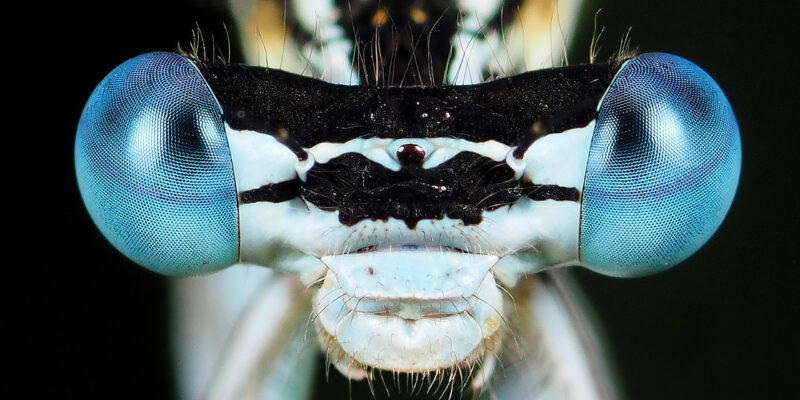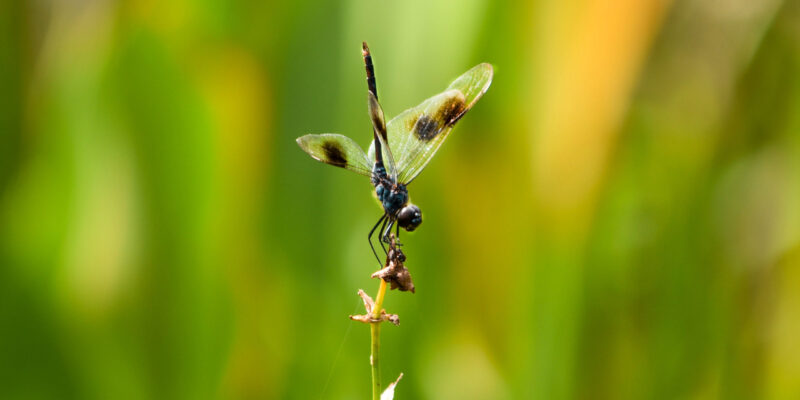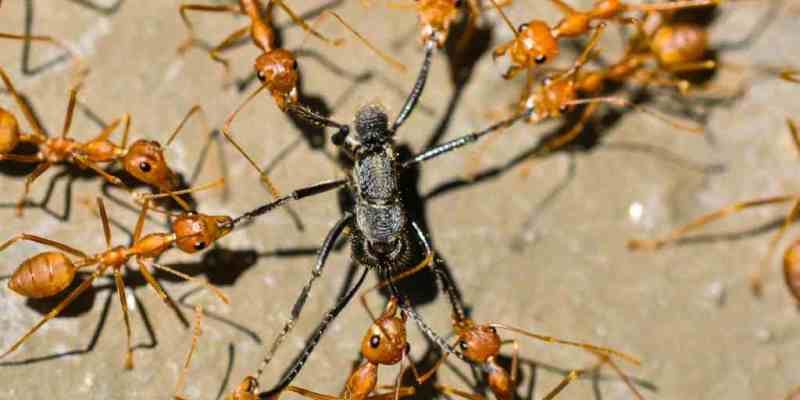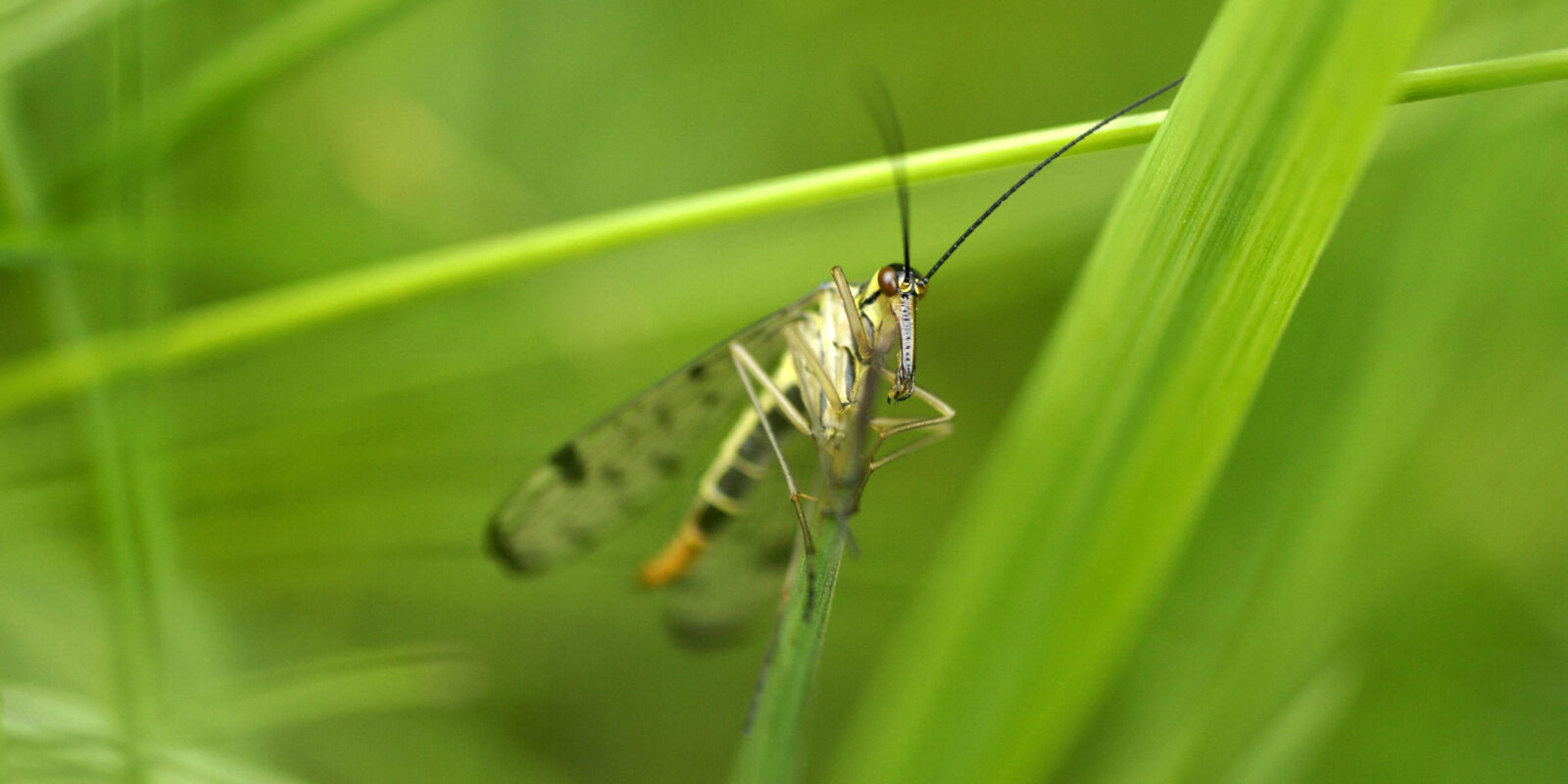
Scorpionflies
Traditionally the Mecoptera have been regarded as closely related to the Diptera and, although this is still accepted, there is increasing evidence that at least one family, the Boreidae, has a closer relationship with the Siphonaptera.
If this is true, then it might have implications for the monophyly of the Mecoptera, or else it might mean that the Siphonaptera would be reduced to a subgroup.
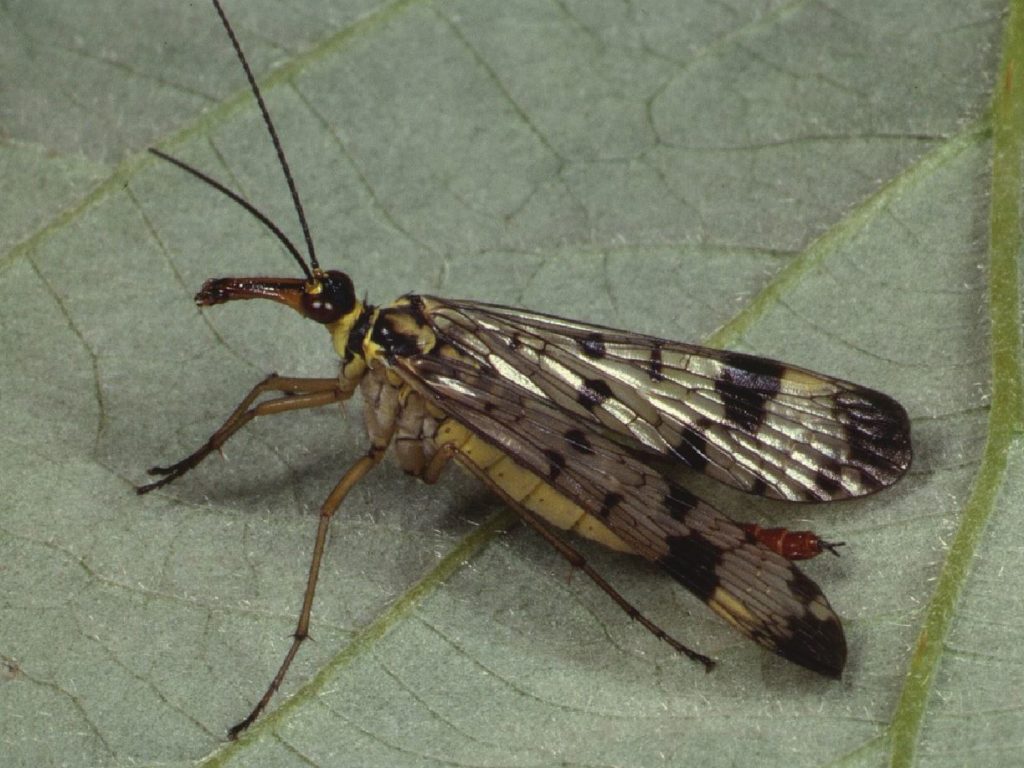
For the time being, the Mecoptera are an easily recognised group, characterised by the elongate ventrally pointing rostrum or ‘beak’ which has biting and chewing mouthparts at its tip.
Both the adult and larval stages are scavengers on a variety of dead animals, usually insects; the adults are most commonly seen at the edges of woodland and similar habitats.
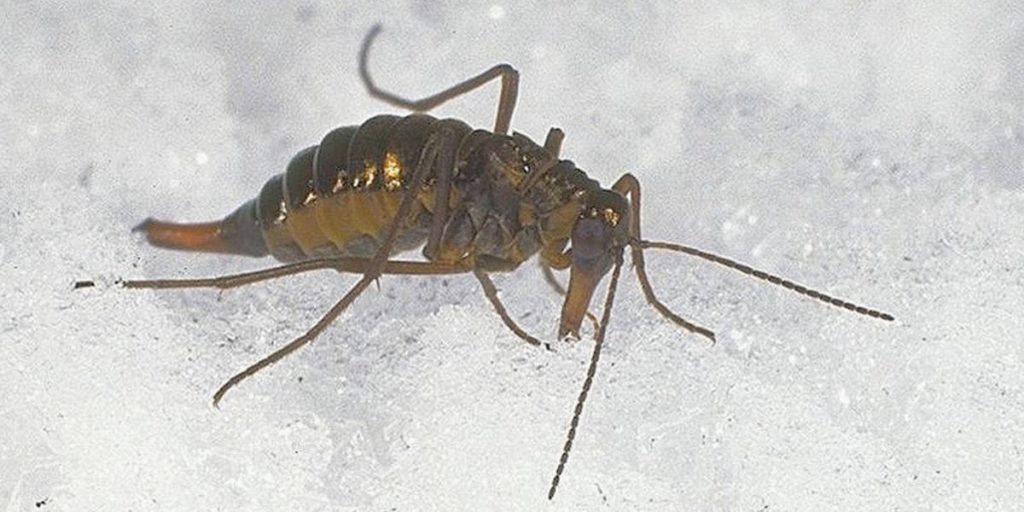
Boreus hyemalis on snow Credit Roger Key 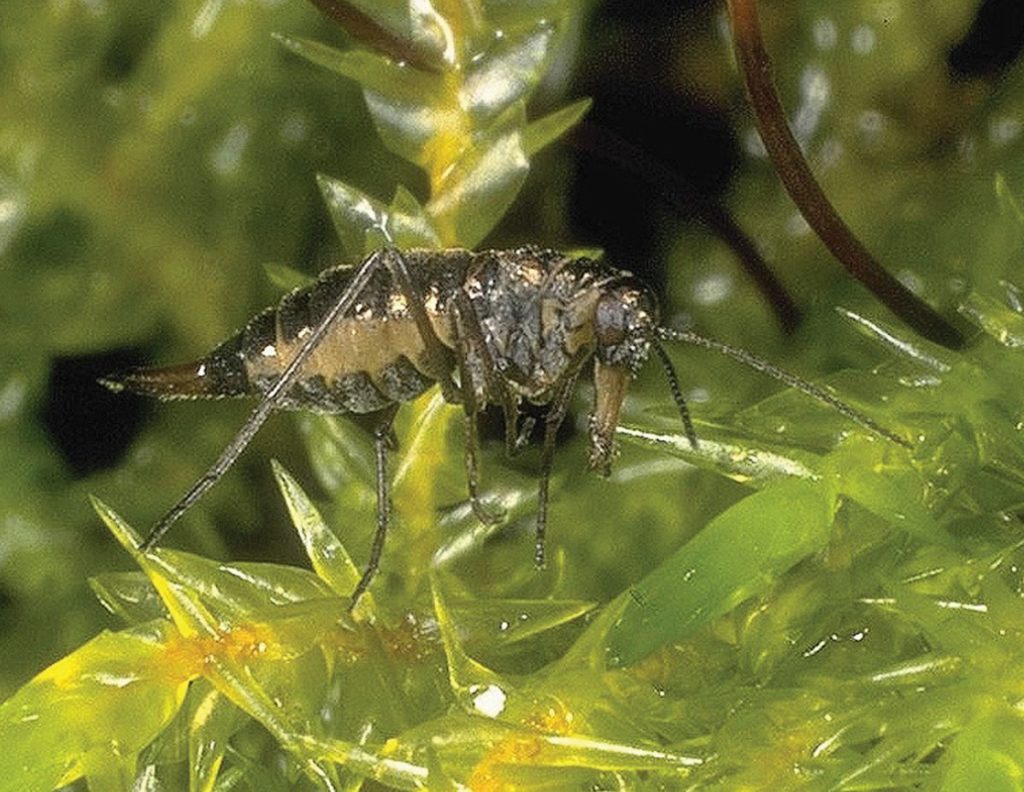
Boreus hyemalis on moss Credit Roger Key
The ‘snow fleas’ of the family Boreidae are remarkable for being active throughout the winter; their larvae feed on mosses, and the dark adults can be conspicuous on the surface of snow.
Worldwide there are around 600 known species in 9 families; in Britain there are 4 species in 2 families.
Identification help

